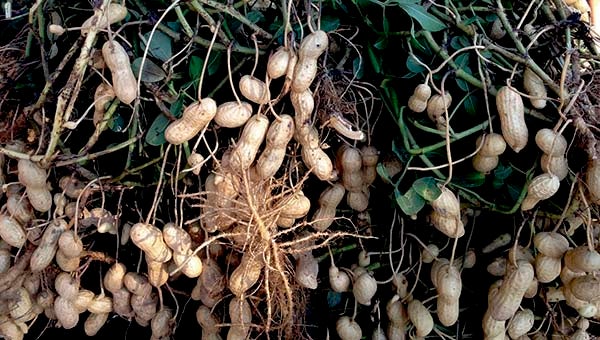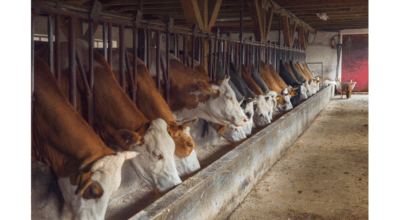Sun, rain nurturing strong growth of local row crops
Published 9:03 am Wednesday, July 8, 2015

The recent warm, wet weather which has promoted peanut growth is also optimal for the development of fungal diseases. — Courtesy
by Austin Brown
COURTLAND
Excellent heat units combined with regular rain showers over most of the county have promoted vigorous growth of our row crops. Many peanut fields have canopies closing, cotton fields are soon to show blooms, and soybeans are off and growing. Chances of rain are in the forecast, and we will see what the weather holds for us.
If you would like to discuss any of the topics, whether in this newsletter or not, please do not hesitate to contact me. I would enjoy meeting with you on your farm, and discussing any agronomic concerns you may have. I work for you, so don’t hesitate to give me a ring.
Stay tuned for more information!
Sincerely,
Austin Brown
Extension Agent, ANR
Plant Growth Regulators
I have heard it said that “the best plant growth regulator (PGR) is a good boll load.” Good boll set is a mechanism of the cotton plant that reduces excessive vegetative growth. Effective PGR usage can slow vegetative growth to a point in which the developing boll load takes over, with the end result of an optimal plant height. Also, PGRs can be an important part of our cotton production systems to hasten maturity as our growing seasons are relatively short compared to other areas of the world.
Decisions concerning PGR applications are often not as clear-cut as others we make throughout the year regarding our row crops. Many variables come into play including growth stage, plant growth rate, soil moisture, expected future weather conditions, soil type, plant stress, field history and cotton variety.
Research in Virginia has gone into the development of an aid for making these decisions named “Pocket Picks: A Guide for Applying Plant Growth Regulators in Cotton.” It can fit in your front pocket and may serve as a valuable reference. It is based on plant height and the length of internodes above/below the fourth node from the top. These can be picked up at the Southampton Extension Office in Courtland. Applications of PGRs have been made this year, but this can serve as a reference with recommendations for the entire season. Managing fields separately, and making applications in a timely manner is key. Keep in mind that various varieties have different growth habits. It is also helpful to consider if soil moisture is supporting vigorous future growth, along with the weather forecast. The level of management needed often varies among fields and scouting fields accordingly is important.
Cucurbit Downy Mildew Tracker
Cucurbit downy mildew is moving its way up the east coast, with recent reports as close as Edgecombe County, North Carolina. Producers in the cucurbit business can track cucurbit downy mildew progress via the Cucurbit Downy Mildew Epidemic Status Map, accessed at http://cdm.ipmpipe.org/scripts/map.php. This disease is favored by wet, humid conditions. Various cucurbits are susceptible to different pathotypes or strains, which there are several. For instance, watermelon and pumpkin are susceptible to only two strains, while cucumber is susceptible to five different strains. Keep in mind that our area may initially show up on this map from a pathotype that affects cucumber, but not watermelon for instance. This is an excellent tool to give you an idea of general disease progression.
Peanut Update
As I wrote this, I was awaiting confirmation on a peanut disease sample I recently submitted. I suspected early leaf spot could be the culprit. It is early for this disease, though I have also heard an early report of sclerotinia blight in a neighboring county. However, the test results that just came in did not show definite evidence of early leaf spot. The recent warm, wet weather which has promoted peanut growth is also optimal for the development of fungal diseases. As peanuts near R3 (beginning pod) stage, it is almost time to make first fungicide applications for leaf spot. The first application can be delayed two weeks after R3 if you are growing Baileys. As peanut canopies lap the risk of sclerotinia blight and southern stem rot increases, especially if wet weather continues. Monitoring through regularly scouting your peanut fields gives you great insight on disease pressure impacting your farms. You can find helpful information related to peanut diseases on the cotton-peanut info net, which is back up and running, and can be accessed at http://webipm.ento.vt.edu/cgi-bin/infonet1.cgi.
Nitrogen
Considering rainfall that we have received, loss of nitrogen (N) from leaching below the rooting zone may have occurred, with deep sandy soils having the greatest potential. If you had high rainfall totals and are concerned about N losses from leaching, tissue testing is a valuable tool for monitoring in-season nutrient status. Most labs have a fairly quick turn-around time on getting results back to you, so that you can make timely decisions. This may be especially useful in cotton.
Black-Light Trapping Initiated
I have begun black-light trapping for corn earworm moths and brown marmorated stink bugs. I am trapping near Courtland to provide you with local information on the moth flight and brown marmorated stink bug counts. Trapping results from across the state will be reported on the Virginia Ag Pest and Crop Advisory, accessed at http://blogs.ext.vt.edu/ag-pest-advisory/. In addition, I will post my results on the Southampton County Extension Office Facebook page, which can be accessed at https://www.facebook.com/SouthamptonExtension.
Waste Oil Recycling
This past March our office coordinated the collection of used oil from local farmers for recycling. We have already been contacted by producers who have current waste oil disposal needs. We are happy to come and free up the collection drums/holding tanks at your shop. In attempts to increase the efficiency of collection and best serve you, our clients, please give our office a call within the next 10 days so that we can add you to the list for collection. Also, it helps us in getting the collection company to come if we have a number of producers with oil lined up, as they require a mass amount.
Upcoming Cotton Field Day
On Tuesday, Aug. 11, the Tidewater Agricultural Research & Extension Center will be hosting the 2015 Virginia/Northeastern North Carolina Cotton Field Day. This field day will have specialist from Virginia Tech and North Carolina State University giving presentations solely on cotton production. Planned stops include disease management, weed management, variety selection & PGR management, nitrogen & sulfur management, in-furrow fertilizers, high input cotton management systems, in-season insect management, and tillage systems in cotton. In addition private pesticide recertification credits will be available.
Registration begins at 7:30 a.m., with the tour beginning at 8:00 am. Pre-registration is required for the tour/lunch. Contact Gail White at 657-6450, ext. 430, or by e-mail at guwhite@vt.edu by July 31 to pre-register. This event will be held at the Main Office of the Tidewater Agricultural Research & Extension Center, 6321 Holland Road, Suffolk. This multi-state event will give you the opportunity to view the latest cotton research efforts in the area and how their results may help you.
Upcoming Events
• Aug. 6 — 2015 Virginia Ag Expo, Locust Grove, Virginia
• Aug. 7 — Southeast Virginia Soybean Field Day, Virginia Beach, Pre-register with VB Extension Office 385-4769 by July 31.
• Aug. 11 — 2015 Virginia/Northeastern North Carolina Cotton Field Day, Tidewater AREC
Austin Brown is the Extension Agent, ANR of the Virginia Cooperative Extension for Southampton County, 21300 Plank Road, Courtland. You may contact him at 653-2572; fax at 653-2849 or abbrown3@vt.edu.





